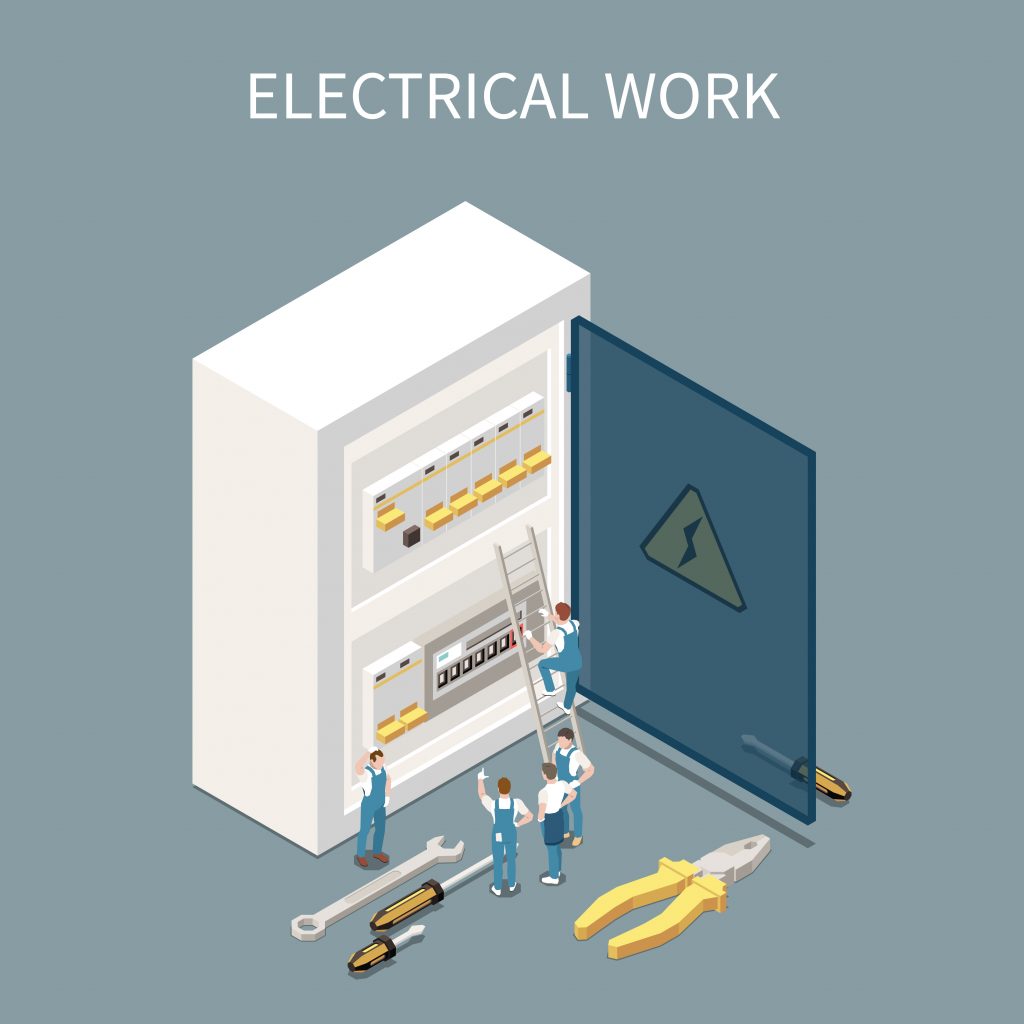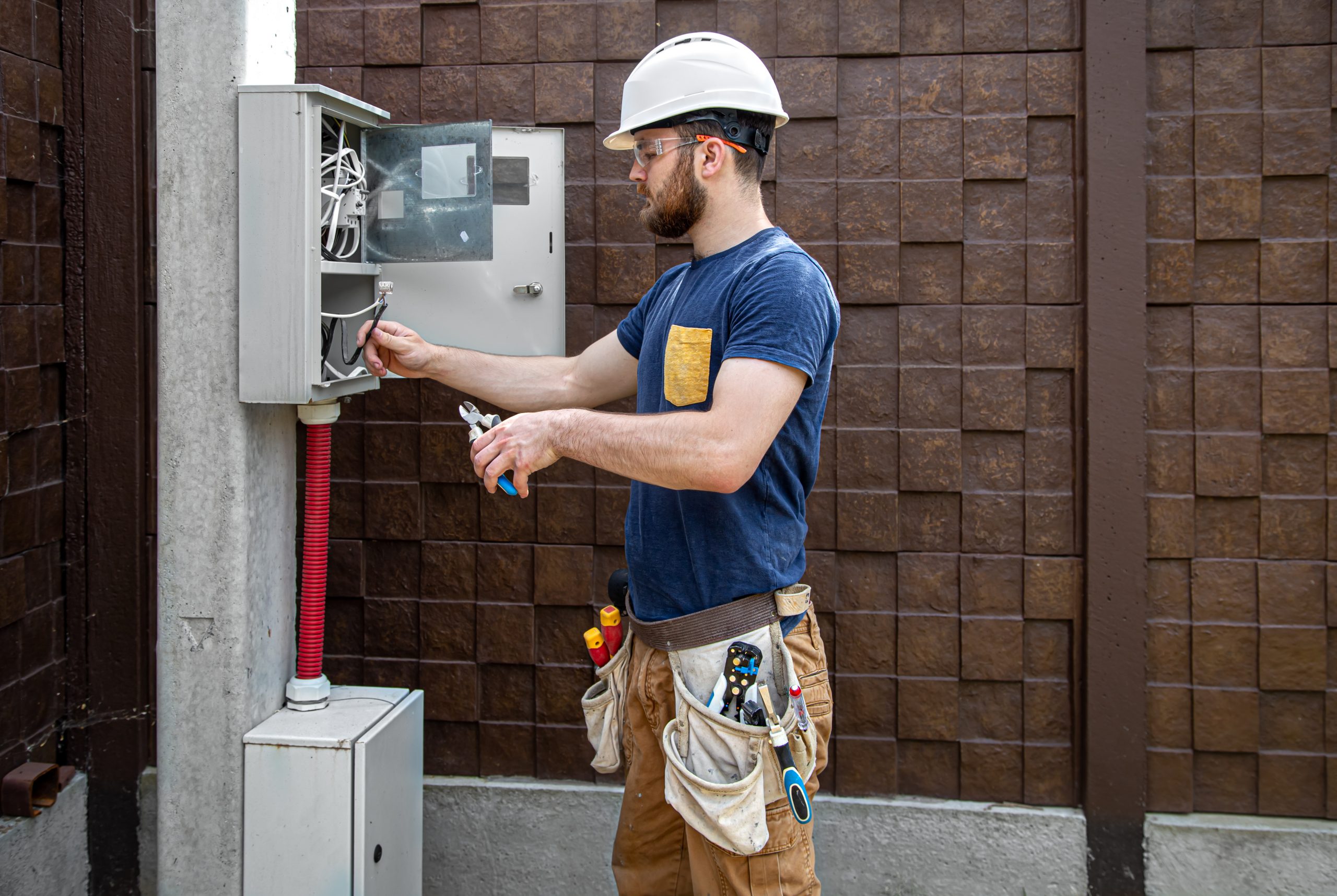Knowing the cost to install a transfer switch will help you determine the overall budget. The components needed and the labor cost would depend on your house’s existing electrical setup.
All necessary information related to the transfer switch installation cost is given here. Let’s identify the variables and other important factors related to the transfer switch installation cost.
How Does a Transfer Switch Work for a Generator?
The function of a transfer switch is to alternate between two power sources. It can detect a power outage and turn on your generator to start providing the electricity needed for the electrical appliances. When the regular electricity service has resumed, the transfer switch will sense it and turn off the generator.
The transfer switch will test the presence of the resumed power supply for a predefined period before signaling the generator to switch off; this is considered a precautionary measure to avoid possible damage to the electrical equipment caused by power blinks and surges.
Another function of a transfer switch is to isolate the power produced by the generator from the utility power. If not, the generated power will be distributed through the power lines to the neighborhood as it happens with solar panels. This reverse power can be hazardous to electrical workers that might be working out there during a power breakdown.
Why Should You Have a Transfer Switch for Your Portable Generator?
Transfer switches make the generators safer and less hazardous. Here are some reasons why you need to invest in a transfer switch.
You Can Power More Appliances
The ports present in the generator will allow you to connect only a limited number of electrical appliances. But you can power more appliances if you connect the generator to your house’s electrical system with a transfer switch. Since it works as a miniature circuit breaker (MCB) panel, a selected number of circuits can be powered up with the generator.
Transfer switches are also the only way to connect a hardwired appliance to the generator, including built-in cooktops, heaters, furnaces, and dishwashers. You may need a generator with more power depending on your load requirement. For more information, refer to what size portable generator to power 200 amp service.
No Need to Use Numerous Extension Cords
The transfer switch lets you connect the generator directly to the household electrical system. Thus, you don’t need extension cords to power up the appliances; this eliminates potential risks of electrocution due to using unsafe extension cords.
Extension cords also do not provide protection against back feed if electricity reverses. You should never connect the generator to the circuit breaker without a transfer switch; this is extremely dangerous. Hence, a transfer switch is not a mere switch but also an important feature that keeps you safe while protecting the appliances.
Prevents Backfeeding the Grid
Back-feeding the grid refers to the electricity being fed back to the power lines from the generator running at your home. As this re-energizes the power lines, people working on the other end could face extreme danger, including electrocution that could lead to death.
If the power restores while your generator is back feeding power, it will destroy the electronics, cause severe implications, and even fire. It may even damage the appliances and properties in the neighborhood. Due to these possible dangers, overlapping the generators and the electrical grid is considered illegal.
Required by Law
As mentioned above, most building codes need the installation of transfer switches where portable or whole-home generators are used. So to abide by the law, you must follow the National Electric Code and install a transfer switch for your generator. In addition to this, this is the only way in which you can claim insurance compensation for damages caused by a possible electrical fire.
Can Prioritize the Energy Needs
You can power up only the essential electrical appliances with a portable generator, unlike with the grid. Therefore, you would have to switch off certain devices to manage the power demand.
Running the appliances with extension cords will be challenging and confusing to prioritize the energy needs. But with a transfer switch, you can switch on the circuits needed and turn off what is unnecessary; this will make it easier to run your essentials simultaneously with proper power management.
How Much Does It Cost to Install a Transfer Switch?

A transfer switch for a generator may cost around $1,500 to $2,000, while the labor cost is usually around $500. The cost to install a transfer switch would also vary depending on the type of transfer switch. Generators of power output 5000W and 7500W are the two most common generators used.
A 5000W generator may need a 6-circuit transfer switch, while a 7500W generator needs a 10-circuit transfer switch depending on the amount of power handled.
The following table gives you an overall idea of the average home generator transfer switch installation cost.
| Type of Transfer Switch | Cost of Transfer Switch | Labor Cost | Average Cost |
| 6-Circuit Switch | $250 – $300 | $200 – $400 | $650 – $700 |
| 10-Circuit Switch | $350 – $400 | $200 – $400 | $750 – $800 |
Although this is the average range of costs, these two transfer switches have different prices depending on the budget and luxury products. The costs of installation are also different for the two extremes.
A 6-Circuit Transfer Switch
| Aspect | Cost of Transfer Switch | Labor Cost | Total Cost |
| Budget | $200 | $250 | $400 |
| Average | $350 | $300 – $350 | $650 – $700 |
| Luxury | $500 – $750 | $500 – $750 | $1000 – $1500 |
A 10-Circuit Transfer Switch
| Aspect | Cost of Transfer Switch | Labor Cost | Total Cost |
| Budget | $350 | $200 – $300 | $550 – $650 |
| Average | $400 | $350 – $400 | $750 – $800 |
| Luxury | $500 – $950 | $500 – $950 | $1000 – $1950 |
Transfer Switch Installation Cost Breakdown
In addition to the costs mentioned above, there are some additional expenses that you may have to expect. These costs depend on important features such as the state of your existing electrical network, the additional materials you need to buy, and the type of electrician you hire. Let’s identify the specific features in each of these categories of cost breakdown.
The State of Your Existing Electrical Network
When installing a transfer switch for the portable generator, the first thing to consider is to check whether the existing electrical network is up to code. If not, you need to start by upgrading the necessary components of the system. For example, if the main service panel box needs upgrading, the cost depends on the amperage, number of circuits, brand, and quality of the panel. Installation of the pane will take about 8 to 10 hours for a professional. The expenses for this task can be summarized as shown below.
- $850 – $4,000 for a new electric panel
- $400 – $1,750 for a sub-panel instead
- $320 – $1,000 for professional labor
The Materials You Need To Buy
If there is no need to upgrade your existing electrical system, then you need to buy the essential infrastructure for the transfer switch.
- $300 – $500 for a manual switch or $400 – $800 for an automatic switch
- $10 – $320 for a generator to house the cord
- $13 – $300 for a power inlet box
The Type Of Electrician Hired
The cost of labor depends on the type of electrician you hire. This is because the charge varies with the professional’s level of experience. You will need to hire an apprentice only if you are installing a manual transfer switch. The average charge distribution will be as follows.
- $40 – $50 hourly for an apprentice
- $50 – $70 hourly for a journeyman electrician
- $100 – 120 hourly for a master electrician
- $75 – $125 as call-out fees
Time Taken for the Installation
A transfer switch can be installed within a few hours or at most within a day. This will not drag on further unless there are unforeseen situations. The professional labor’s cost is shown here, considering the labor spending approximately 2 – 4 hours for the installation.
- $80 – $500 for two to four hours of professional labor
Extra Labor Costs
Extra labor costs come into the act if you get a professional to find the right components. This may add up to your cost as they will not shop for free. You can save the following labor costs if you buy the transfer switch and related components yourself. Consult an electrician or research online to ensure that you purchase the correct component.
- $40 – $120 hourly savings if you buy and install the components
- Savings of $80 – $500 if you install a transfer switch on your own
However, you should not install a transfer switch on your own if you are not qualified in handling electrical work. It will be best to get it done by a professional as you don’t need to risk any dangers of electrocution. Even if you are experienced in electrical installations, you must consult the switch manual carefully when installing the transfer switch.
Cost of Local Authorization
Modifying an electrical system will need permission from the local authorities, and you need to pay for this. The cost of the permit varies depending on the region and the project. Since some local authorities may not give this permit to you, let a licensed electrician get it.
- $10 – $500 for an electrical permit
- $100 – $400 for inspections
When your house’s electrical system needs modification, it is important to inspect everything. This is essential to be on the safe side by preventing any defects in the system. This will cost you something from $100 to $400 per inspection session.
What Are The Different Types Of Transfer Switches?
There are a few types of transition switches for generators. You can go through the following types and decide on a specific type to buy for your generator.
Open Transition Transfer Switch
This type of transition switch completely breaks the connection from one circuit before connecting to the other. This is a safe method as it prevents any chance of back feeding to the utility power lines. The devices will feel a disconnection of power for a second as it disconnects and reconnects. Although this disconnection time will not be very noticeable, it will affect the electrical system and appliances. So, if you have frequent blackouts in your region, you may need to go for a better option with a smoother transition.
Closed Transition Transfer Switch
In this mechanism, the transfer switch makes contact with the new circuit before disconnecting from the old circuit. Hence, there will be no momentary loss of power when transitioning from one circuit to the other. It is also known as the make before break type of contact. Both power sources need to be compatible and synchronized. If not, it will move back to its default open state.
Soft Loading Transfer Switch
This switch lets the generator synchronize with the utility and minimize the voltage variance during the switching.
Static Transfer Switch
There are no moving parts switching between the two circuits in this type. Instead, it consists of semi-conductors to switch between the two power sources. So the system depends on the electrical transition rather than a mechanical movement in this static transfer switch.
Manual VS Automatic Transfer Switches
You have to flip the manual transfer switch physically, to get the power from the generator during a power outage. Depending on the type of generator, you will also have to start the generator manually. The automatic transfer switch will detect the power outage and switch to the generator within a split second. There are more important features in addition to this main difference between the two types.
| Manual Transfer Switches | Automatic Transfer Switches |
| It should be turned on manually | Switches on automatically |
| Does not detect when the main power restores | Can detect when the main power is available and shifts back |
| Should switch to main power manually | Automatically shifts to the main power |
| Costs less than automatic switches | Expensive than manual transfer switches |
| Takes less time for the electrician to install | Takes more time for the installation |
| Inconvenience in switching on during blackouts | Convenient |
| A safe option if you are not around as it will not turn on by itself | May waste power by turning on automatically when residents are not present. |
Frequently Asked Questions

How long does it take to install a transfer switch?
The average time taken for installing a transfer switch by a skilled electrician is around 4 hours. This could extend a few hours more or even up to a day due to certain difficulties and unforeseen issues. The time is predictable if you are installing only the transfer switch for an existing generator. It will take much longer if you install the whole house generator and the transfer switch. The time will also affect how much to install a transfer switch.
Can you install a transfer switch yourself?
It is recommended to hire an electrician to install a transfer switch as they are less likely to make mistakes or electrocute themselves. Some regions also have regulations prohibiting homeowners from carrying out major installations without electricians. Even if you are an experienced professional, you must review the owner’s manual before installing a transfer switch.
Is it wiser to use a transfer switch or an interlock?
The difference between an interlock and a transfer switch is the power distribution from the generator. The transfer switch delivers power to a limited number of connections, while the interlock kit transmits power to any connection inside the electric panel. If the generator is undersized, it may even have the risk of overheating due to running on full load continuously.
How far can a generator be from the transfer switch?
There is no specific distance that marks a safe or unsafe distance between the generator and the transfer switch. Usually, most generators are safe up to 60 – 70 feet away from the transfer switch. However, the generator should not be kept too far from the home as electricity may weaken over distance. Since you need to store the generator away from home, knowing how to run a generator in rain will be useful.
Why is it so expensive to install a transfer switch?
Transfer switches are quite expensive as they are manufactured considering precise safety technology. The transfer switch installation cost is also affected by the cost of labor which changes with the type of switch. Installation of a transfer switch is not an easy task as it requires technical knowledge and expertise.
The electrician should mount the transfer switch next to the main electrical panel and connect the two. Then the electrical box should be connected to the wall outside, and the cable should be connected between the box and the switch. The electrical receptacle of the switch then needs to be connected to the box outside. Since this process takes time and effort, the fee charged by the electrician is quite high.
Conclusion
The cost to install a transfer switch depends on various factors, as discussed in the context above. You can find how much to install a transfer switch using the average prices indicated. The costs may vary depending on the make and model of the components as well as the price fluctuations in the market. You cannot work with a fixed cost assumption when working on a project like this. It is better to estimate on the higher end in calculating the budget, as you can use any amount remaining for another renovation in your home if you spend less.
Are generators EMP proof? Find out more about this to take good care of your generator from harmful electromagnetic pulses.
